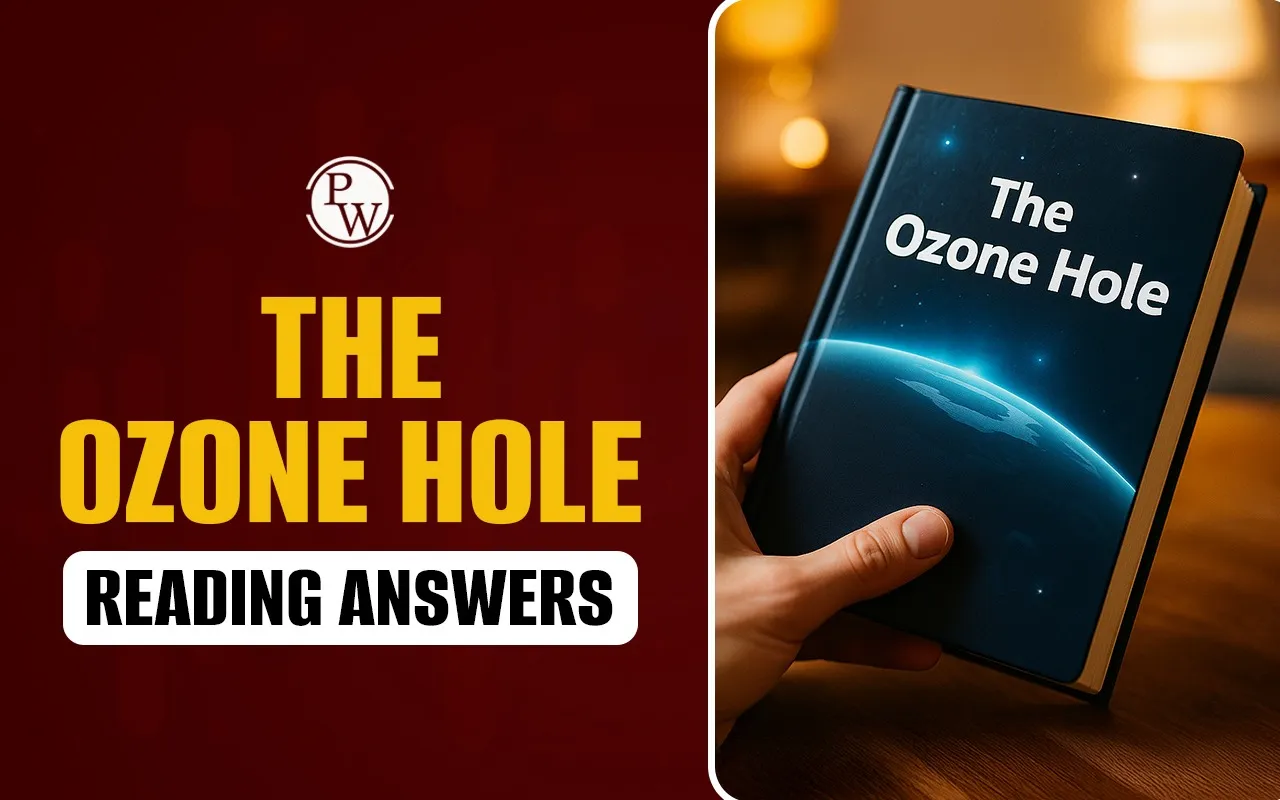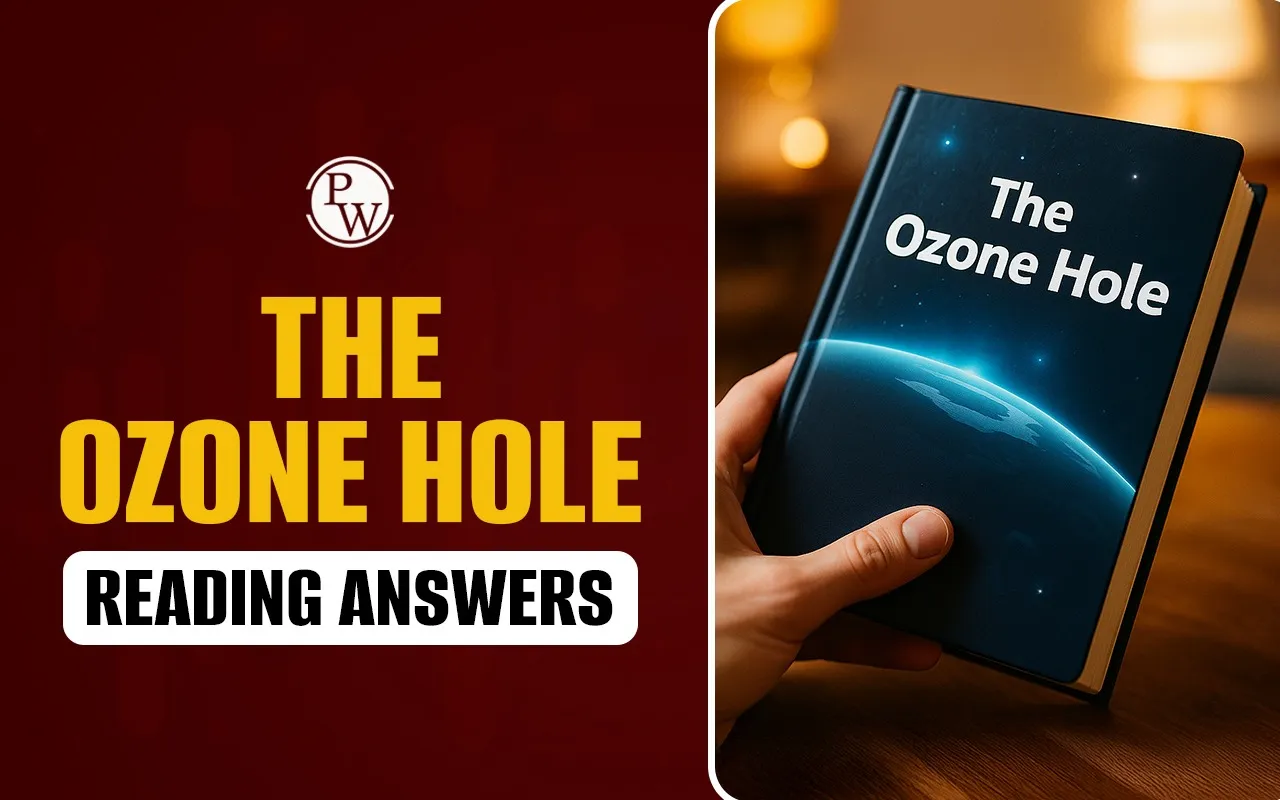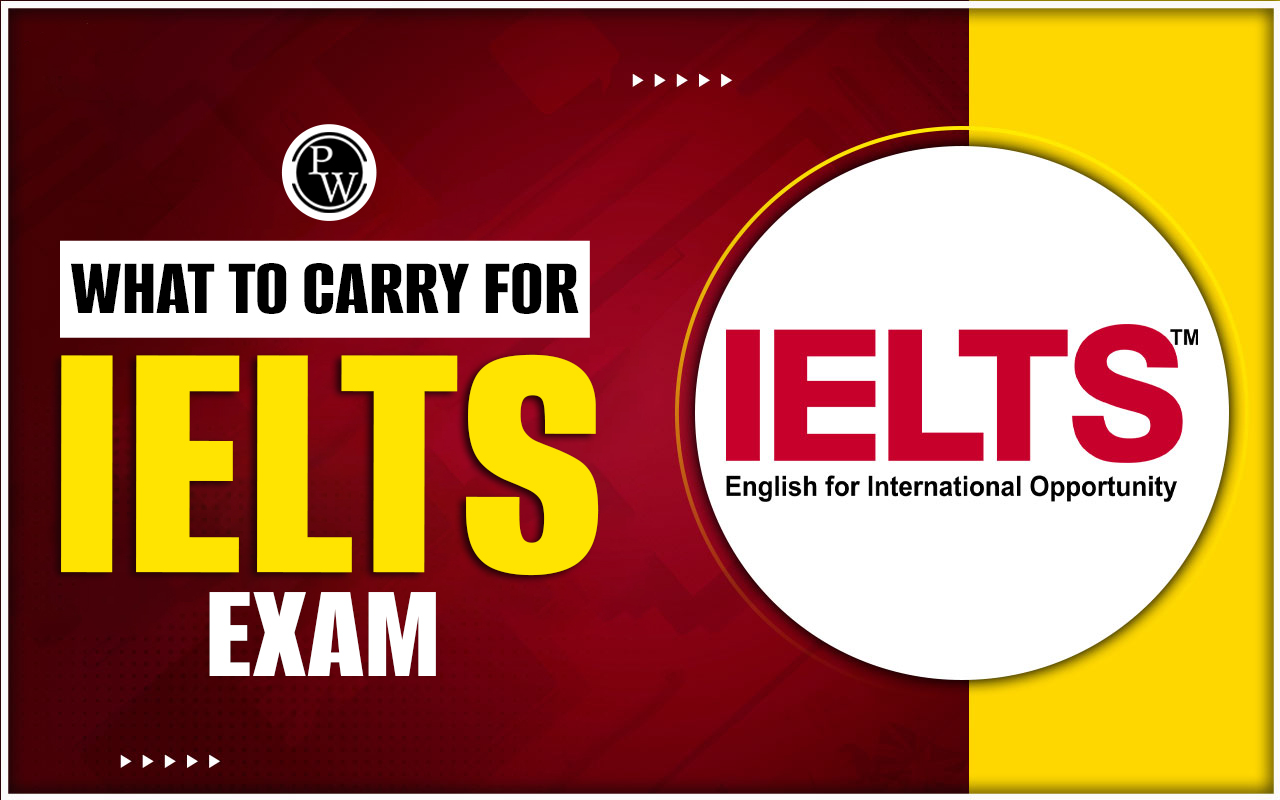

The Ozone Hole Reading Answer: Environmental issues are among the most common and relevant topics included in the IELTS reading exam. The IELTS reading passage on The Ozone Hole serves as an effective resource for strengthening exam preparation. Understanding this passage helps candidates improve their reading accuracy and time management. Additionally, students gain awareness about one of the most critical environmental concerns facing our planet.
This guide provides a detailed passage, which is helpful in gaining Ozone Layer IELTS reading explanation. Further, candidates can also access practice questions and the IELTS reading answers for environmental science with explanations.
IELTS Online Coaching 2025, Free Courses for Study
The Ozone Hole Reading Answer IELTS Passage
Here is the IELTS passage on Ozone hole. Candidates should carefully read the passage and highlight important terms to quickly answer the practice questions.
Reading Passage: The Ozone Hole
Paragraph A
Ozone is a bluish gas that is harmful to breathe. Nearly 90% of the Earth's ozone is in the stratosphere and is referred to as the ozone layer. Ozone absorbs a band of ultraviolet radiation called UVB that is particularly harmful to living organisms. Stratospheric ozone is constantly being created and destroyed through natural cycles. Various ozone-depleting substances, however, accelerate the destruction processes, resulting in lower than normal ozone levels. Reductions in ozone levels will lead to higher levels of UVB reaching the Earth's surface. The sun's output of UVB does not change; rather, less ozone means less protection, and hence more UVB reaches the Earth. Studies have shown that in the Antarctic, the amount of UVB measured at the surface can double during the annual ozone hole. Laboratory and epidemiological studies demonstrate that UVB causes non-melanoma skin cancer and plays a major role in malignant melanoma development. In addition, UVB has been linked to cataracts.
Paragraph B
Dramatic loss of ozone in the lower stratosphere over Antarctica was first noticed in the 1970s by a research group from the British Antarctic Survey (BAS) who were monitoring the atmosphere above Antarctica from a research station. Folklore has it that when the first measurements were taken in 1975, the drop in ozone levels in the stratosphere was so dramatic that at first, the scientists thought their instruments were faulty. Replacement instruments were built and flown out and it wasn't until they confirmed the earlier measurements, several months later, that the ozone depletion observed was accepted as genuine. Another story goes that the BAS satellite data didn't show the dramatic loss of ozone because the software processing the raw ozone data from the satellite was programmed to treat very low values of ozone as bad readings. Later analysis of the raw data when the results from the British Antarctic Survey team were published, confirmed their results and showed that the loss was rapid and large-scale; over most of the Antarctica continent.
Paragraph C
Ozone occurs naturally in the atmosphere. The earth's atmosphere is composed of several layers. We live in the Troposphere, ground level up to about 10km high, where most of the weather occurs such as rain, snow, and clouds. Above that is the Stratosphere, an important region in which effects such as the Ozone Hole and Global Warming originate. The layer next to space is the Exosphere and then going inwards there are the Thermosphere and the Mesosphere. Supersonic passenger jets fly just above the troposphere whereas subsonic commercial airliners are usually well in the troposphere. The narrow region between these two parts of the atmosphere is called the Tropopause. Ozone forms a layer in the stratosphere, thinnest in the tropics and denser towards the poles. The amount of ozone above a point on the earth's surface is measured in Dobson units (DU) - typically ~260 DU near the tropics and higher elsewhere, though there are large seasonal fluctuations. It is created when ultraviolet radiation in the form of sunlight strikes the stratosphere, splitting oxygen molecules into atomic oxygen. The atomic oxygen quickly combines with further oxygen molecules to form ozone.
Paragraph D
The Ozone Hole often gets confused in the popular press and by the general public with the problem of global warming. Whilst there is a connection because ozone contributes to the greenhouse effect, the Ozone Hole is a separate issue. Over Antarctica (and recently over the Arctic), stratospheric ozone has been depleted over the last 15 years at certain times of the year. This is mainly due to the release of man-made chemicals containing chlorine such as CFCs (ChloroFluorocarbons) but also compounds containing bromine, other related halogen compounds, and also nitrogen oxides. CFCs are a common industrial product, used in refrigeration systems, air conditioners, aerosols, solvents, and in the production of some types of packaging. Nitrogen oxides are a by-product of combustion processes, for example, aircraft emissions.
Paragraph E
The ozone depletion process begins when CFCs and other ozone-depleting substances are emitted into the atmosphere where winds efficiently mix and evenly distribute the gases. CFCs are extremely stable, and they do not dissolve in rain. After several years, natural gases in the stratosphere combine with CFCs and this releases chlorine atoms, halons, and methyl bromide. These in turn all release bromine atoms and it is these atoms that destroy ozone. It is estimated that one chlorine atom can destroy over 100,000 ozone molecules before it is removed from the stratosphere.
Paragraph F
The first global agreement to restrict CFCs came with the signing of the Montreal Protocol in 1987 ultimately aiming to reduce them by half by the year 2000. Two revisions of this agreement have been made in the light of advances in scientific understanding, the latest being in 1992. An agreement has been reached on the control of industrial production of many halocarbons until the year 2030. The main CFCs will not be produced by any of the signatories after the end of 1995, except for a limited amount for essential uses, such as medical sprays. The countries of the European Community have adopted even stricter measures. Recognizing their responsibility to the global environment they have agreed to halt production of the main CFCs from the beginning of 1995. It was anticipated that these limitations would lead to a recovery of the ozone layer within 50 years of 2000. The World Meteorological Organisation estimated 2045 but recent investigations suggest the problem is perhaps on a much larger scale than anticipated.
- IELTS exam eligibility requirements
- Documents Required for IELTS Registration
- IELTS Test Slot Booking
The Ozone Hole Reading Answer IELTS Questions
Provided below are the IELTS question sets related to the above passage:
Question Type: Multiple Choice (1-7)
Choose the correct option for each question:
1. According to the passage, ozone in the stratosphere:
A) Is harmful to living organisms
B) Protects Earth from harmful ultraviolet radiation
C) Makes up only 10% of Earth's total ozone
D) Changes the sun's UVB output
2. The British Antarctic Survey first noticed ozone depletion in
A) 1987
B) 1992
C) 1975
D) The 1970s
3. The atmosphere layer where most weather occurs is called
A) Stratosphere
B) Troposphere
C) Mesosphere
D) Tropopause
4. Ozone is measured in
A) Atmospheric units
B) Dobson units
C) Stratospheric units
D) UV units
5. CFCs are primarily used in
A) Aircraft emissions only
B) Medical applications exclusively
C) Refrigeration systems and aerosols
D) Natural atmospheric processes
6. One chlorine atom can destroy approximately
A) 1,000 ozone molecules
B) 10,000 ozone molecules
C) 100,000 ozone molecules
D) 1,000,000 ozone molecules
7. The Montreal Protocol was signed in
A) 1975
B) 1987
C) 1992
D) 1995
Question Type: True/False/Not Given (8-13)
8. Ozone depletion and global warming are the same environmental problem.
9. The ozone layer is thickest near the Earth's poles.
10. Satellite data initially failed to detect ozone depletion due to software programming.
11. Bromine atoms are more destructive to ozone than chlorine atoms.
12. The European Community agreed to stricter CFC restrictions than the Montreal Protocol required.
13. Scientists are certain that ozone layer recovery will occur by 2045.
Question Type: Summary Completion (14-18)
Complete the summary using the appropriate words from the passage.
The ozone depletion process begins when (14)______ and other harmful substances are released into the atmosphere. These chemicals are extremely (15)______ and do not (16)______ in rain. In the **(17), these substances release **(18) atoms that destroy ozone molecules.
Question Type: Short Answer Questions (19-22)
Answer the following questions using three or less words from the passage.
19. What type of cancer does UVB radiation cause besides malignant melanoma?
20. What is the narrow region between the troposphere and stratosphere called?
21. In which year was the latest revision of the Montreal Protocol made?
22. What medical products were mentioned as essential CFC uses?
What are the IELTS Reading Answers for Ozone Depletion?
Referring to the correct answers for IELTS questions on the Ozone depletion passage, candidates can analyse their performance. Additionally, they can identify their weaknesses and streamline their problem-solving approach to strengthen accuracy.
Answer 1-7: Multiple Choice Answers
-
B - Protects Earth from harmful ultraviolet radiation
Explanation: Paragraph A states, "Ozone absorbs a band of ultraviolet radiation called UVB that is particularly harmful to living organisms.
-
D - The 1970s
Explanation: Paragraph B clearly states Dramatic loss of ozone in the lower stratosphere over Antarctica was first noticed in the 1970s.
-
B - Troposphere
Explanation: Paragraph C explains that we live in the Troposphere, ground level up to about 10km high, where most of the weather occurs.
-
B - Dobson units
Explanation: Paragraph C states that the amount of ozone above a point on the Earth's surface is measured in Dobson units (DU).
-
C - Refrigeration systems and aerosols
Explanation: Paragraph D lists that CFCs are used in refrigeration systems, air conditioners, aerosols, and solvents.
-
C - 100,000 ozone molecules
Explanation: Paragraph E states, it is estimated that one chlorine atom can destroy over 100,000 ozone molecules.
-
B - 1987
Explanation: Paragraph F mentions The first global agreement to restrict CFCs came with the signing of the Montreal Protocol in 1987.
Answer 8-13: True/False/Not Given Answers
-
False
Explanation: Paragraph D explicitly states "the Ozone Hole is a separate issue" from global warming.
-
True
Explanation: Paragraph C states ozone is "thinnest in the tropics and denser towards the poles."
-
True
Explanation: Paragraph B explains that the software was "programmed to treat very low values of ozone as bad readings."
-
Not Given
Explanation: The passage doesn't compare the destructive power of bromine versus chlorine atoms.
-
True
Explanation: Paragraph F states that the European Community "adopted even stricter measures" and agreed to halt production earlier.
-
False
Explanation: The passage ends by stating, "recent investigations suggest the problem is perhaps on a much larger scale than anticipated.
Answer 14-18: Summary Completion Answers
-
CFCs
-
stable
-
dissolve
-
stratosphere
-
chlorine
Answer 19-22: Short Answer Answers
-
non-melanoma skin cancer
-
Tropopause
-
1992
-
medical sprays
How to Approach the IELTS Reading on Atmospheric Changes?
Here are the tips and strategies on how to solve the IELTS reading passage on the ozone layer depletion passage:
-
Carefully read the passage and aim to highlight scientific terms like stratosphere, CFCs, and ultraviolet radiation.
-
Many IELTS passages based on environmental issues focus on cause-effect relationships. Candidates must aim to identify these relations, as many questions are based on these details.
-
When reading the passage, candidates should try to mark the factual data such as date, year, etc.
-
Candidates must answer all the questions based on the content of the passage. They must avoid providing individual ideas or assumptions.
Guidance of PW IELTS
Physics Wallah offers a few popular online IELTS courses for all students. Follow the latest IELTS articles to better prepare for the exam.
| IELTS Registration | IELTS Eligibility Criteria |
| IELTS Exam Pattern | IELTS Syllabus |
| IELTS Exam Dates | IDP IELTS Test Centers |
The Ozone Hole Reading Answer FAQs
What is the ideal time for solving Ozone hole IELTS questions?
Why is the IELTS reading passage on the ozone hole important?
How should I approach the IELTS reading on atmospheric changes?
How to get answers in reading IELTS ozone hole passage?












